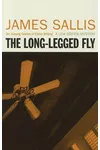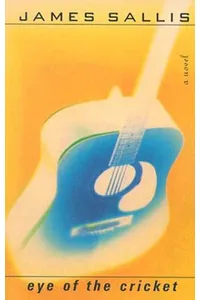Step into the sultry, shadow-filled streets of New Orleans, where Lew Griffin, a black private investigator, poet, and professor, navigates mysteries that cut deeper than crime. James Sallis’ Lew Griffin series, spanning six novels from 1992 to 2001, blends gritty noir with profound explorations of identity, racism, and the human condition. This isn’t your typical detective saga—it’s a literary journey that haunts and captivates, inviting readers to unravel the enigma of Griffin himself.
With its lyrical prose and New Orleans’ vibrant backdrop, the series offers a fresh take on crime fiction, earning praise for its bold style and emotional depth. Ready to dive into a world where every case reveals a piece of the soul? Let’s explore the heart of Lew Griffin.
How Lew Griffin Began
James Sallis, a versatile American writer known for his work in crime fiction, poetry, and even science fiction, introduced Lew Griffin in 1992 with The Long-Legged Fly. Inspired by the raw energy of New Orleans and a desire to merge literary depth with noir, Sallis crafted Griffin as a complex African-American protagonist—a rarity in the genre at the time. His vision was to subvert traditional detective tropes, focusing on character over plot, and to reflect the cultural and racial tensions of the American South.
Sallis’ background as a poet and musician infused the series with a rhythmic, bluesy cadence, while his experiences in diverse fields, including respiratory therapy, grounded the stories in visceral reality. The result was a series that felt both timeless and urgently relevant, with Griffin’s introspective nature setting it apart from conventional mysteries.
The Heart of Lew Griffin
The series kicks off with The Long-Legged Fly (1992), where Griffin tackles missing-persons cases across decades, from 1964 to 1990. Each case, like finding political activist Corene Davis, mirrors his own search for identity amid personal demons, including alcoholism and loss. Moth (1993) sees Griffin drawn back to the streets to find a friend’s runaway daughter, weaving themes of loyalty and redemption against New Orleans’ seamy underbelly.
Black Hornet (1994), a prequel set in the 1960s, dives into the era’s racial unrest, with Griffin investigating a sniper’s deadly spree. The series concludes with Ghost of a Flea (2001), where Griffin confronts a body in his home and reflects on his life’s unraveling—a poignant meditation on memory and self. Sallis’ prose, often described as haunting and poetic, elevates these stories, while the New Orleans setting, rich with jazz, humidity, and cultural crossroads, becomes a character itself. Themes of racism, identity, and survival resonate, making the series a mirror to society’s darker truths.
Unlike traditional mysteries, the plots are fragmented, jumping through time, and focus on Griffin’s inner struggles as much as external cases. This nonlinear style, paired with sharp dialogue and vivid imagery, creates a noir that’s as introspective as it is thrilling, appealing to readers who crave substance with their suspense.
Why Lew Griffin Resonates
The Lew Griffin series has left a lasting mark on crime fiction, praised for its literary ambition and unflinching look at race and identity. Critics have lauded its “haunting prose” and “existential depth,” comparing it to the works of Raymond Chandler and Paul Auster. Its influence extends beyond genre, inspiring writers to blend noir with social commentary. Fans cherish Griffin’s flawed humanity and the series’ ability to capture New Orleans’ soul, from its jazz clubs to its mean streets.
The series’ niche status only adds to its allure, offering a hidden gem for those seeking stories that challenge and linger. Its exploration of African-American experience in a white-dominated world remains strikingly relevant, cementing its place in American literature.
- Publication Years: 1992–2001
- Number of Books: 6
- Notable Recognition: Bouchercon Lifetime Achievement Award for James Sallis (2007)
Ready to lose yourself in Lew Griffin’s world? Grab The Long-Legged Fly and step into a noir masterpiece where mystery meets the heart of New Orleans!





